How Many Watts Are Needed to Charge a 24V Battery
When it comes to charging a 24V battery, understanding the wattage required is crucial for efficient performance and longevity. Whether you are powering an electric vehicle, a solar system, or an industrial application, knowing exactly how many watts you need ensures you choose the right charger and avoid damaging your valuable 24V battery. In this guide, we will break down everything you need to know about calculating the right charging watts, different charger types, safety tips, and common mistakes to avoid.
- Understanding the Basics of a 24V Battery
- How to Calculate the Watts Needed for a 24V Battery
- Factors Influencing How Many Watts a 24V Battery Needs
- Recommended Charging Wattages for Different 24V Battery Types
- Choosing the Right Charger for Your 24V Battery
- Common Mistakes When Charging a 24V Battery
- How to Safely Charge a 24V Battery
- How Long Does It Take to Charge a 24V Battery
- Frequently Asked Questions About Charging a 24V Battery
- Tips to Extend the Life of Your 24V Battery
- Choose the Right Watts for Your 24V Battery Charging Needs
Understanding the Basics of a 24V Battery
Before diving into the wattage calculations, it’s important to understand what a 24V battery actually is. A 24V battery typically consists of either a single large unit or multiple smaller batteries connected in series to achieve a total output of 24 volts. Commonly found in electric bikes, RVs, forklifts, and solar storage systems, the 24V battery is a popular choice because of its balance between power and size.
Voltage and Amperage in a 24V Battery
Voltage refers to the potential energy per unit charge, while amperage measures the amount of electric charge flowing. The relationship between volts, amps, and watts is critical in determining how many watts are needed to charge your 24V battery. The basic formula to remember is:
Watts = Volts × Amps
This formula will be the foundation for all our calculations and discussions throughout this article.
>>See also How to Upgrade Your Golf Cart Battery with a Complete Lithium Conversion Guide
How to Calculate the Watts Needed for a 24V Battery
To determine how many watts are needed to charge your 24V battery, you must consider the battery's capacity and the desired charging speed.
Step-by-Step Calculation Example
Suppose you have a 24V battery rated at 100 amp-hours (Ah). If you want to charge it at a rate of 10 amps:
Watts = 24 volts × 10 amps = 240 watts
Therefore, you would need a charger that can deliver at least 240 watts to effectively charge the 24V battery at a 10-amp rate.
If you want faster charging, say at 20 amps:
Watts = 24 volts × 20 amps = 480 watts
Naturally, faster charging requires more wattage.
Factoring in Efficiency Losses
No charging process is 100% efficient. Typically, charger inefficiencies can account for about 10–20% losses. To accommodate this:
Real Wattage Needed = Calculated Watts ÷ 0.85
For a 240-watt calculation:
Real Wattage = 240 ÷ 0.85 ≈ 282 watts
Thus, you should use a charger rated around 300 watts for safer and more efficient operation of your 24V battery.
Factors Influencing How Many Watts a 24V Battery Needs
Several variables affect the wattage required to properly charge a 24V battery. Understanding these will help you make a better purchasing decision and ensure optimal battery health.
Battery Capacity
The larger the amp-hour rating of your 24V battery, the more watts will be required to charge it efficiently.
Desired Charging Time
If you need quick turnaround times, you'll need a higher wattage charger. Slow overnight charging allows for lower wattages.
Charger Efficiency
Always select a charger with a high efficiency rating (at least 85% or above) to ensure you are not wasting energy when charging your 24V battery.
Battery Chemistry
Different chemistries—such as lead-acid, lithium-ion, or AGM—have different charging needs. Lithium 24V batteries, for example, can often handle faster charging rates compared to traditional lead-acid batteries.
Recommended Charging Wattages for Different 24V Battery Types
Here’s a helpful guide based on battery capacity:
|
24V Battery Capacity |
Suggested Charging Current |
Suggested Charging Watts |
|
24V 10Ah |
2A-5A |
48W-120W |
|
24V 50Ah |
5A-10A |
120W-240W |
|
24V 100Ah |
10A-20A |
240W-480W |
|
24V 200Ah |
20A-40A |
480W-960W |
Use this chart to quickly estimate the right wattage for your 24V battery charging needs.
Choosing the Right Charger for Your 24V Battery
When selecting a charger, matching the charger's wattage and voltage specifications with your 24V battery is critical.
Key Features to Look For
Voltage Compatibility: Ensure the charger is designed specifically for 24V batteries.
Amperage Control: Look for chargers that allow adjustable amperage settings.
Automatic Shutoff: Protects against overcharging.
Temperature Sensors: Especially useful for large or sensitive battery banks.
Popular 24V Battery Charger Brands
Some trusted brands for 24V battery chargers include NOCO, Victron Energy, and Renogy. These brands offer smart chargers with features that maximize battery life.
Common Mistakes When Charging a 24V Battery
Even with the right charger, mistakes can happen. Here are the most frequent pitfalls:
Using an Incorrect Charger
Charging a 24V battery with a 12V charger will not work properly and may damage both the battery and charger.
Overcharging
Without automatic shutoff features, overcharging can severely damage the internal chemistry of your 24V battery.
Ignoring Temperature Effects
Charging at extremely high or low temperatures can cause degradation. Always check the manufacturer’s temperature guidelines.
How to Safely Charge a 24V Battery
Pre-Check the System
Inspect all connections, cables, and the charger before beginning.
Monitor the Charging Process
Especially for older 24V batteries, it’s a good idea to monitor voltage and temperature while charging.
Store Properly After Charging
Store your 24V battery at around 50% charge if you plan not to use it for an extended period to maintain its lifespan.
How Long Does It Take to Charge a 24V Battery
Charging time depends on the battery capacity and the wattage of your charger.
Example Calculation
A 24V 100Ah battery charged at 10A:
Charging Time ≈ 100Ah ÷ 10A = 10 hours (plus 10-20% for inefficiency)
Using a faster 20A charger would reduce this time to approximately 5 hours.
>>See also Difference Between 36V 48V and 72V Lithium Golf Cart Batteries Explained
Frequently Asked Questions About Charging a 24V Battery
Can I Use a 12V Charger on a 24V Battery?
No, a 12V charger will not fully charge a 24V battery and may damage it.
How Do I Know if My Charger Is Suitable for a 24V Battery?
Check the output voltage rating— it must specifically state 24V.
Is Fast Charging Bad for a 24V Battery?
Not necessarily, but consistently charging at maximum amperage can reduce lifespan over time if not carefully managed.
Tips to Extend the Life of Your 24V Battery
Use chargers with smart technology.
Avoid extreme temperatures during charging and usage.
Regularly check the health of your 24V battery using battery management systems (BMS).
Do not deeply discharge your battery unless necessary.
Choose the Right Watts for Your 24V Battery Charging Needs
Selecting the right wattage for charging a 24V battery is crucial to maintain its health and efficiency over the long term. Whether you are managing a small battery for an electric bike or a large storage system for solar energy, understanding how many watts are needed is the foundation for safe and optimal charging. Make sure to factor in your battery’s capacity, the desired charging speed, and charger efficiency to make the best choice. Always prioritize a charger specifically designed for a 24V battery to ensure longevity and reliable performance. By following the guidance in this article, you’ll ensure that your 24V battery remains a dependable source of energy for years to come.


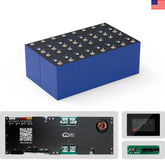



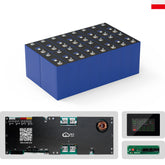

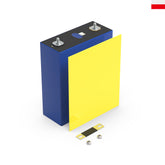

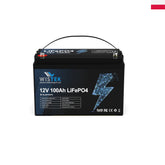
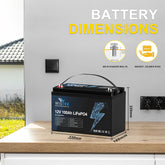


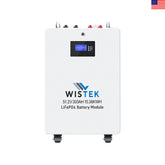
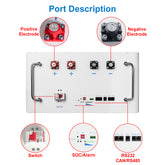
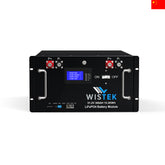
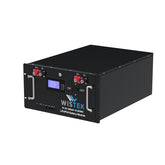

Leave a comment
All blog comments are checked prior to publishing